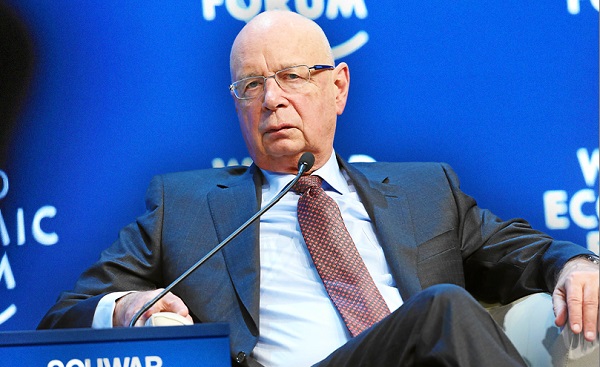International
New Mexico sues Meta, Mark Zuckerberg for facilitating child sex trafficking

From LifeSiteNews
New Mexico Attorney General Raúl Torrez concluded that Facebook and Instagram have become ‘prime locations’ for sexual predators to trade child pornography and ‘solicit minors for sex.’
New Mexico’s attorney general filed a lawsuit on Tuesday against Meta Platforms, the parent company of Facebook and Instagram, and its CEO, Mark Zuckerberg, for facilitating child sex trafficking as well as the distribution of child sex abuse material.
Attorney General Raúl Torrez, a career prosecutor who has specialized in internet crimes against children, concluded after his office’s months-long investigation that Meta’s social media platforms are “not safe spaces for children, but rather prime locations for predators to trade child pornography and solicit minors for sex.”
The New Mexico Office of the Attorney General found that Meta “directs harmful and inappropriate material” at minors and “allows unconnected adults to have unfettered access to them,” despite the fact that Meta is capable of both identifying these users as minors and “providing warnings or other protections against” the harmful material. Worse, such material “poses substantial dangers of solicitation and trafficking.”
According to the lawsuit, the investigation found that, “[s]pecifically, with accounts clearly belonging to children,” Meta has:
Proactively served and directed them to a stream of egregious, sexually explicit images through recommended users and posts – even where the child has expressed no interest in this content;
Enabled adults to find, message, and groom minors, soliciting them to sell pictures or participate in pornographic videos;
Fostered unmoderated user groups devoted to or facilitating Commercial Sexual Exploitation of Children (CSEC);
Allowed users to search for, like, share, and sell a crushing volume of child sexual abuse material (CSAM);
Allowed, and failed to detect, a fictional mother offering her 13-year old for trafficking, and solicited the 13-year old to create her own professional page and sell advertising.
Investigators reported Meta accounts showing sexually explicit depictions of children but found that about half of a sample of the reported content was still available days before they filed a lawsuit. Removed content often reappeared, or Meta recommended “alternative, equally problematic content to users,” the investigators found.
While a search for pornography on Facebook was “blocked and returned no results,” the same search on Instagram returned “numerous” accounts depicting pornography, nudity, pedophilia, and sexual assault.
Remarkably, according to the lawsuit, “certain child exploitative content” is 10 times more common on Facebook and Instagram as compared to the notorious pornographic website PornHub and the “adult content” platform OnlyFans.
The investigators’ findings underscore the growing problem not only of child sex trafficking but of “porn-made pedophiles,” a phenomenon testified to by child protection expert Michael Sheath. These are “people who were not initially attracted to children” but whose brains have been “rewired by compulsive porn consumption to be attracted to children, often because they escalate to increasingly extreme content as their porn addiction progresses,” in the words of Jonathon Van Maren.
The Unherd article “How porn breeds paedophiles” shares what Sheath learned as a probation officer trying to understand male sex offenders.
“Eventually, these men would reveal how they operated. Many of the men talked about mainstream, free and legal porn having been a gateway to the illegal stuff, and some went on to create porn themselves, which, of course, requires children to be abused,” he explained.
The findings of the New Mexico AG’s office have been corroborated by a two-year investigation by The Guardian, which found that Meta is failing to “prevent criminals from using its platforms to buy and sell children for sex,” as minors are being advertised for sex trafficking on Instagram, and Facebook is also being used to facilitate such trafficking.
In fact, according to the Guardian report, several pension and investment funds that own Meta stock sued the company in March for failing to act on “systemic evidence” that its platforms are facilitating sex trafficking and child sexual exploitation.
Business
Chinese firm unveils palm-based biometric ID payments, sparking fresh privacy concerns

By Ken Macon
Alipay’s biometric PL1 scanner uses vein and palm-print data for processing payments, raising security concerns over the storage and use of permanent biometric data.
Alipay, the financial arm of Alibaba, has introduced a new palm-based biometric terminal, dubbed the PL1, which enables individuals to make purchases simply by presenting their hand – no phone, card, or PIN required. Positioned as a faster, touch-free alternative for payment, this system reflects a growing industry shift toward frictionless biometric transactions.
At the core of the PL1 is a dual-mode recognition system that combines surface palm print detection with internal vein mapping. This multi-layered authentication relies on deeply unique biological signatures that are significantly harder to replicate than more common methods like fingerprints or facial scans. Alipay reports that the device maintains a false acceptance rate of less than one in a million, suggesting a substantial improvement in resisting identity spoofing.
Enrollment is designed to be quick: users hover their palm over the sensor and link their account through a QR code. Once registered, purchases are completed in around two seconds without physical interaction. During early trials in Hangzhou, this system reportedly accelerated checkout lines and contributed to more hygienic point-of-sale environments.
The PL1 arrives at a time of rapid expansion in the biometric payments sector. Forecasts estimate that more than 3 billion people will use biometrics for transactions by 2026, with total payments surpassing $5 trillion. Major players are already onboard: Amazon has integrated palm authentication across U.S. retail and healthcare facilities, while JP Morgan is gearing up for a national deployment in the same year.

Alipay envisions the PL1’s use extending well beyond checkout counters. It is exploring applications in public transit, controlled access facilities, and healthcare check-ins, reflecting a broader trend toward embedding biometric systems in daily infrastructure. However, while domestic deployment benefits from favorable policy conditions, international expansion may be constrained by differing legal standards, particularly in jurisdictions that enforce stringent rules on biometric data usage and consent.
Despite the technological advancements and convenience the PL1 offers, privacy remains a major point of contention. Unlike passwords or cards that can be reset or replaced, biometric data is immutable. If compromised, individuals cannot simply “change” their palm patterns or vein structures. This permanence heightens the stakes of any potential data breach and raises long-term concerns about identity theft and surveillance.
Alipay’s approach, storing encrypted biometric templates locally on devices and restricting data flow within national border, does address certain regulatory demands, especially within China, but the broader implications of biometrics are likely to be a growing privacy and surveillance concern in the coming years.
conflict
Marco Rubio says US could soon ‘move on’ from Ukraine conflict: ‘This is not our war’

From LifeSiteNews
Secretary of State Marco Rubio is calling the EU/UK bluff here because he knows without the U.S. the EU/UK will not commit to fight Russia.
Secretary of State Marco Rubio spoke to reporters in Paris on April 18 about the prolonged peace talks between Russia and Ukraine. However, a frustrated Rubio warned that the U.S. could “move on” from its involvement in negotiations to end the war if no progress is made “within a matter of days and weeks.” That’s the mainstream media narrative.
The non-pretending summary is that Ukraine, France, Great Britain, the EU, NATO, et al are all trying to retain their interests in the conflict. Russia has simple terms, but the war machinery controlled by the intel apparatus (CIA and EU) and the financial stakeholders in the EU region are unhappy. A frustrated Secretary Rubio says, make up your mind, if no deal – we’re done.
Having followed this very closely, here’s what “we’re done” likely means.
President Trump ends the U.S. side of the proxy war. President Trump pulls back all support for Ukraine, stops sending money, weapons, and, to the extent he can, intelligence to Ukraine. This opens the door for Russia to go full combat as the ground thaws, without concern for U.S. to engage.
The EU will have to step up with funding, intelligence, and war material to continue supporting Ukraine. Rubio is calling the EU/UK bluff here because he knows without the U.S. the EU/UK will not commit to fight Russia.
Remember that if no one does anything, Russia has already gained the ground they want and will just continue grinding western Ukraine to ever-expanding rubble. Factually, doing nothing is a big win for Russia, especially if Trump withdraws.
Reprinted with permission from Conservative Treehouse.
-

 2025 Federal Election2 days ago
2025 Federal Election2 days agoOttawa Confirms China interfering with 2025 federal election: Beijing Seeks to Block Joe Tay’s Election
-

 2025 Federal Election1 day ago
2025 Federal Election1 day agoBREAKING: THE FEDERAL BRIEF THAT SHOULD SINK CARNEY
-

 2025 Federal Election2 days ago
2025 Federal Election2 days agoHow Canada’s Mainstream Media Lost the Public Trust
-

 2025 Federal Election2 days ago
2025 Federal Election2 days agoReal Homes vs. Modular Shoeboxes: The Housing Battle Between Poilievre and Carney
-

 2025 Federal Election1 day ago
2025 Federal Election1 day agoCHINESE ELECTION THREAT WARNING: Conservative Candidate Joe Tay Paused Public Campaign
-

 Media1 day ago
Media1 day agoCBC retracts false claims about residential schools after accusing Rebel News of ‘misinformation’
-

 John Stossel2 days ago
John Stossel2 days agoClimate Change Myths Part 2: Wildfires, Drought, Rising Sea Level, and Coral Reefs
-

 Business1 day ago
Business1 day ago‘Great Reset’ champion Klaus Schwab resigns from WEF





